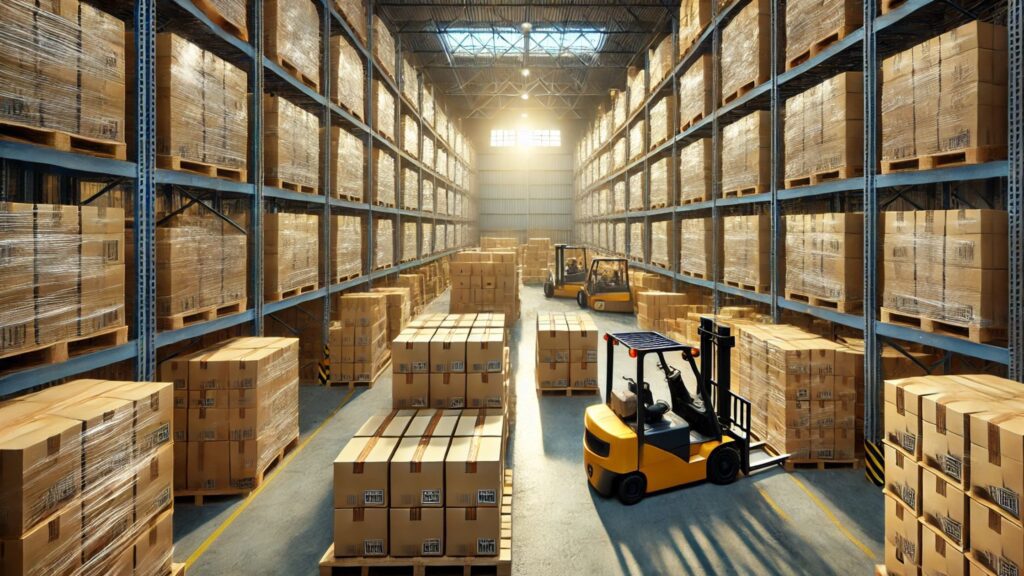What is Tertiary Packaging: In today’s fast-paced global supply chain, packaging plays a vital role in ensuring products reach their final destination safely. While primary and secondary packaging are commonly discussed, tertiary packaging is just as important. It serves as the backbone of transportation and logistics, providing essential protection and organization for bulk shipments. Understanding tertiary packaging is key to optimizing storage, handling, and distribution processes.
What is Tertiary Packaging?
When discussing packaging, most people are familiar with primary and secondary packaging, but what is tertiary packaging? Tertiary packaging is the outermost layer of packaging used for bulk handling, storage, and transportation of goods. It plays a crucial role in ensuring that products reach their destination safely and efficiently.
The Purpose of Tertiary Packaging
The primary function of tertiary packaging is to protect products during transit. It is designed to facilitate easy handling and transportation while minimizing damage. It also helps in organizing and securing multiple units of products together for streamlined logistics.
Examples of Tertiary Packaging
Tertiary packaging includes materials such as:
- Pallets – Used to stack and transport multiple boxes securely.
- Shrink Wrap – Holds products together and provides stability during shipping.
- Corrugated Shipping Boxes – Protects multiple units of secondary packaging.
- Crates and Containers – Ensures safe transport of heavy or fragile items.
Difference Between Primary, Secondary, and Tertiary Packaging
- Primary Packaging: The first layer of packaging that comes in direct contact with the product (e.g., a soda bottle or a cereal box liner).
- Secondary Packaging: Groups multiple primary packages together for retail sale or easier handling (e.g., a cardboard box containing multiple soda bottles).
- Tertiary Packaging: Bulk packaging that secures multiple secondary packages for transport and storage (e.g., a pallet loaded with boxed soda bottles wrapped in shrink wrap).
Benefits of Tertiary Packaging
- Protection: Prevents damage from environmental factors, impact, and handling.
- Efficiency: Streamlines supply chain processes and logistics.
- Cost-Effectiveness: Reduces losses due to damaged goods and optimizes space utilization.
- Sustainability: Many tertiary packaging materials are recyclable and reusable, contributing to environmental conservation.
Conclusion: What is Tertiary Packaging
Tertiary packaging is a crucial component in logistics and supply chain management. It ensures that goods remain intact from the manufacturer to the retailer or consumer. Understanding its role helps businesses optimize their shipping processes, reduce costs, and enhance product safety. Now that you know what tertiary packaging is, you can appreciate its impact on the efficiency and success of modern distribution networks.
Related Articles
- The Art and Science of Packaging | Trends, History & Future
- The Importance of Secondary Packaging Material in Modern Supply Chains
- Secondary Packaging Examples: Enhancing Protection and Presentation
- Primary and Secondary Packaging: Understanding Their Roles and Importance
- The Importance of Secondary Packaging Machinery in Modern Manufacturing
- Secondary Packaging in Pharmaceutical Industry: Importance & Innovations
- What Is Secondary Packaging? The Essential Guide for Businesses
- The Ultimate Guide to Popcorn Packaging: Innovation, Trends, and Sustainability
- The Art and Science of Honey Packaging: A Guide to Preserving Nature’s Sweetness
- The Future of Takeaway Packaging: Sustainable and Innovative Solutions

